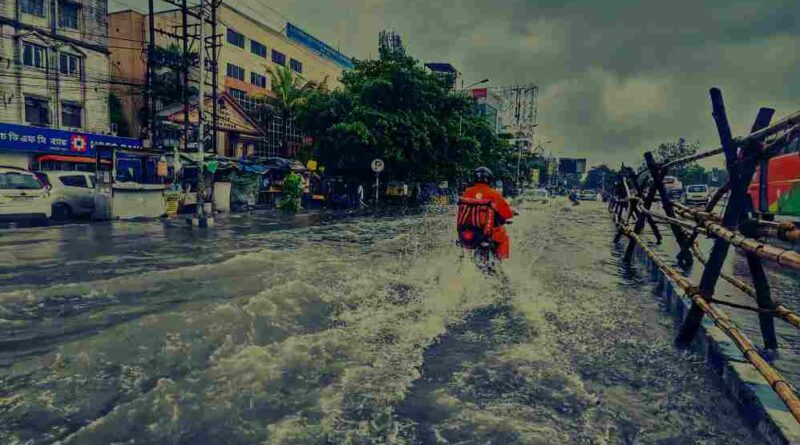Why Gurugram Still Sinks After Every Rainfall
Every year, when the monsoon clouds gather over Gurugram, residents brace themselves—not for relief from the heat, but for the chaos that follows. The Millennium City, home to skyscrapers, luxury apartments, and some of the biggest multinational offices, finds itself drowning after just a few hours of heavy rain. Roads become rivers, traffic snarls stretch for kilometers, and daily life comes to a grinding halt.
The question on everyone’s mind remains the same: why can’t a city as modern and wealthy as Gurugram handle rain?
A City Built on Fragile Foundations
The truth lies in Gurugram’s rapid transformation. In just two decades, the city expanded faster than its infrastructure could keep pace with. Natural drains, wetlands, and low-lying catchment areas that once carried rainwater away have been eaten up by concrete. Housing complexes, shopping malls, and office towers have mushroomed in spaces that were meant to absorb water.
When rain falls, there is simply nowhere for it to go. Instead of being soaked into the ground or channeled into drains, the water stagnates on roads, parking lots, and basements.
Drainage Designed for Yesterday
Another major reason for the city’s flooding is its outdated drainage system. Much of Gurugram’s stormwater network was designed years ago, based on rainfall averages that no longer apply in today’s climate reality. With more intense downpours now a norm, the drains are too narrow and too few to handle the volume.
Even the drains that exist are often clogged with silt, plastic, and construction waste. By the time cleaning drives are organized, the rains have already arrived, and waterlogging becomes unavoidable.
The Trouble with Topography
Gurugram’s natural slope also works against it. Several sectors are built in low-lying areas that act like bowls, collecting water during every downpour. Without strong pumping systems or linked master drains, these areas stay flooded for hours, sometimes days. Residents of these neighborhoods often complain that stepping out after rain feels like wading through an open swimming pool.
The Human Cost of Every Downpour
For commuters, a two-hour drive to work can suddenly stretch into a nightmarish six-hour crawl. For shopkeepers, waterlogged markets mean days of lost business. For families, leaking roofs, flooded basements, and electricity cuts turn the joy of rain into pure stress.
Social media erupts with videos of submerged highways, cars half-drowned, and people stranded in knee-deep water. What makes matters worse is that this isn’t a one-off tragedy—it’s a pattern that repeats every year, and residents feel their voices are often ignored.
Governance and the Blame Game
Every monsoon, agencies point fingers at each other. Municipal bodies cite rapid urbanization and encroachment. Developers blame weak civic planning. Officials announce new master plans and model sector projects, but implementation is slow, and accountability is unclear.
The result? A patchwork of short-term fixes that do little to prevent the next season of chaos.
Can Gurugram Be Saved from Its Rain Woes?
Experts believe the city can still reclaim control, but it will require bold steps:
- Restoring natural water bodies like lakes, ponds, and wetlands to act as sponges during heavy rainfall.
- Upgrading drainage infrastructure with wider, interconnected master drains and regular maintenance.
- Introducing climate-smart urban design, including green spaces, rainwater harvesting, and permeable pavements.
- Better coordination between agencies, with clear responsibility for prevention and quick response during emergencies.
- Citizen involvement, so residents can report blocked drains or illegal encroachments before the rains cause havoc.
The Larger Lesson
Gurugram’s struggle is more than just a local issue—it’s a warning for all fast-growing cities in India. Building glass towers and wide highways without considering ecological balance comes at a cost. Ignoring natural drainage patterns and chasing unchecked construction may bring prosperity in the short term, but it leaves cities fragile when nature strikes back.
Final Word
The Millennium City’s image of progress cannot be complete if it continues to sink with every shower. Until Gurugram rethinks its urban planning and invests seriously in resilient infrastructure, residents will keep facing the same yearly nightmare: a city that stops moving the moment it rains.
The rain may be natural, but the flood is man-made.
Disclaimer
The information and content shared on digitalgithub.com — including articles, blogs, news, guides, and other resources — is intended for general informational and educational purposes only. We do not guarantee the completeness, reliability, or suitability of any information. Always seek the guidance of a qualified professional before making decisions based on the information you read. Use this site at your own risk.

